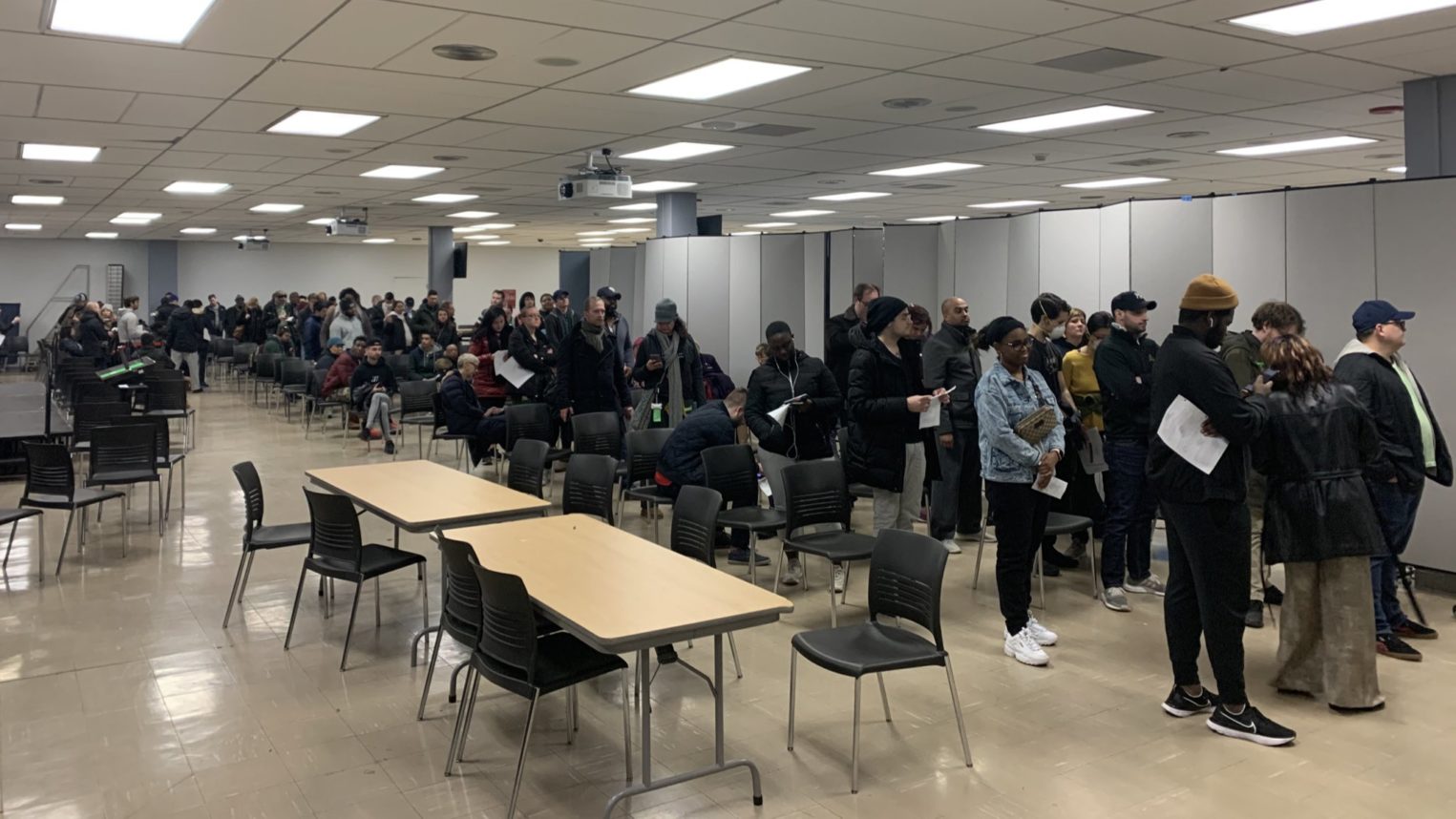 Photo from Pixabay.
Photo from Pixabay. I don’t know about you, but I’m a clock watcher at the gym. I find myself breaking each exercise into bits, so I can count down the time and feel progress. Who among us didn’t keep count of progress on a 20 page paper in college—“I’ve written 12 pages. I’m 60% there! Pass the coffee…” “I’ve been on this bike for 20 minutes—2/3 down!” If you think of this lockdown as eight weeks (but who really knows), then we’re already 1/8 of the way, or 12.5% in….
Perspective
Jake reminds me that, as tough as it is for most of the readers of this newsletter, this is a much tougher time for many of our fellow citizens. There is talk that the unemployment rate will hit 20%. For some perspective, it peaked at 9.9% in the Great Recession and it reached a peak of 24.9% during the Great Depression (1933). From 1931-1940, until industrial production surged for the imminent entry into war, the unemployment rate never dropped below 14%. The economic impact from this crisis will resonate for years and will affect many people. We need to be aware of this and do what we can once the dust settles to help ease that pain, create jobs and solve the woeful inadequacy of the infrastructural, economic and social support systems of our country.
I’m sure we’re all thinking about the cooks in the kitchen at our favorite restaurant, the wait staff, the valet service, and the bus staff. Consider the retail stores that have closed their doors—some for good. Consider the workers that serve your homes—gardeners, pool cleaners, delivery people, handy-men, laundry delivery. Consider those that perform services for you—hair salons, nail salons (well not some of us…), car washes, dry-cleaners personal trainers, physical therapy. All of these people will need our help.
There are things we can do now.
-
- Cancel your personal trainer or service provider but keep paying them. Think of it as your own two month “stimulus package.”
- Give your gardener or pool cleaner the option not to come if they have issues with child care or don’t feel safe themselves—yet continue paying them.
- Reach out to restaurants and buy gift cards…or just call and say you want to give money to the team, to be distributed as the restaurant owner deems appropriate.
Some people want to roll up their sleeves and help. This urge is laudable. We are constrained in this natural desire to “be of use,” but we’re not experts. I can’t tell you how many non-profit board meetings I’ve attended in the past 40 years when I’ve heard the plaintive cry of the professional staff, “How to we tell folks that we really need most is money to do our work.” It sounds transactional and distant—but we’re not health care professionals, we can’t run schools or day care centers, and we aren’t licensed to work in social welfare organizations. If the organization is providing valuable services, let’s enable them to better do their job.
Great Daily Diversion
I have been subscribing to a free daily e-mail called “Delancey Place” for some time. It describes itself as “Eclectic excerpts delivered in your email every day.” And it’s just that. Each day you get an excerpt from a non-fiction book. Recent excerpts come from:
-
- Grand Canyon Women in Many Lands (excerpt about the first woman ranger at the Grand Canyon)
- Big Wonderful Thing: A History of Texas
- The Proud Tower: A Portrait of the World Before the War, 1890-1914 (by the way, this is a great book by the great Barbara Tuchman, who wrote the Pulitzer Prize winning The Guns of August, about the outbreak of World War I
- A Brief History of France (excerpt about Joan of Arc)
- 1965: The Most Revolutionary Year in Music, by Andrew Grant Jackson
- Lost Explorers, by Ed Wright (excerpt about the Malian king who may have discovered the Americas)
- Every Drop of Blood, by Edward Achorn (excerpt about Frederick Douglass’s visit with Abraham Lincoln)
The excerpts are more-or-less self-contained set pieces. You get the picture. Eclectic. Try it out at delanceyplace.com. [for some reason I can’t get this to hyperlink]
Let’s Get Real About Physical Separation
A picture is worth 1,000 words This one is of a voting precinct in Chicago this past Tuesday. Do you think there might be a few more contacts than the Surgeon General would like? Things have to change:

Non-Fiction that Reads Like Fiction
Fiction has its place—a writer can let their imagination fly and take us with them to different worlds, different times, different circumstances. Non-fiction has its place—a great historian doesn’t just tell a story, but provide context of a subject to its times, the antecedent events and following effects. But a writer who can provide both—the immediacy and intensity of great fiction, coupled with the perspective and context of non-fiction, is rare indeed. There are a few masters of this craft and some great reads. The list is long, but here are a few:
-
- Devil in the White City, by Erik Larsen, just one of the several truly great novelizations of historic events—big and small. This is the one that started him off—the story of the Chicago World’s Fair juxtaposed against the story of a serial killer. The New York Times said of this National Book Award Finalist, “[Larson] relentlessly fuses history and entertainment to give this nonfiction book the dramatic effect of a novel. Mr. Larson has written a dynamic, enveloping book….It doesn’t hurt that this truth is stranger than fiction.”
-
- Thunderstruck, In the Garden of Beasts and Dead Wake, also by Erik Larsen (I may have a crush on this guy—he will reappear in later Musings, I’m sure!)
- Killers of the Flower Moon: The Osage Murders and the Birth of the FBI, by David Grann, provides a vivid picture of native American life, the oil boom in the west, the abusive treatment of the Osage nation by profit seekers, a real crime thriller and a great history of how the FBI was founded. It was a National Book Award Finalist and on many “best books” lists for the year.
- Say Nothing: A True Story of Murder and memory in Northern Ireland, by Patrick Radden Keefe (recommended by Jon Berger)
- The March, by E.L. Doctorow, a novel of the march of William Tecumseh Sherman through Georgia and the Carolinas
More Museum Tours
Tom Masenga, thanks for providing this great link to museum tours.
We’ve seen enough cute dogs and cats on line. How about penguins! The Shedd Aquarium, in Chicago, let its penguins out of their habitat so they could take a tour without all those humans in the way. This is just one of them; there are several. If this doesn’t make you smile…
Wellington meets the sea otters! 🦦🐧 Wellington the rockhopper continued his field trip around the aquarium by visiting the Shedd otter habitat. #WheresWellingtonWednesday (1/2) pic.twitter.com/VlEeDzSoIV
— Shedd Aquarium (@shedd_aquarium) March 18, 2020
Closing Humor
Dana Gordon sends this:

Sorry for this one but I laughed out loud:

Shabbat Shalom
Wishing everyone a Shabbat Shalom. Whether you’re Jewish and it begins this evening or whether you celebrate a different sabbath (or none at all), wishing you one of peace, reflection, health and happiness. Here’s a guy adjusting to the times and praying with his…well, you know…
Special Send-off to the Weekend
From Chino Valley High School to us, via Jan Petrovich, a great take on the seminal Israel “IZ” Kamakawiwoʻole version. I promise you will smile.
Peace,
Glenn
Special note: You will see that I’ve had to divide the list of addressees into several groups. Apparently address list has gotten too long and some email programs think I’m spamming folks. Please make sure I haven’t been caught in your spam filter! Moving to a mailing program after the weekend blasts (Lauren is helping me)























 More news and opinions than at a Shabbat dinner, right in your inbox.
More news and opinions than at a Shabbat dinner, right in your inbox.